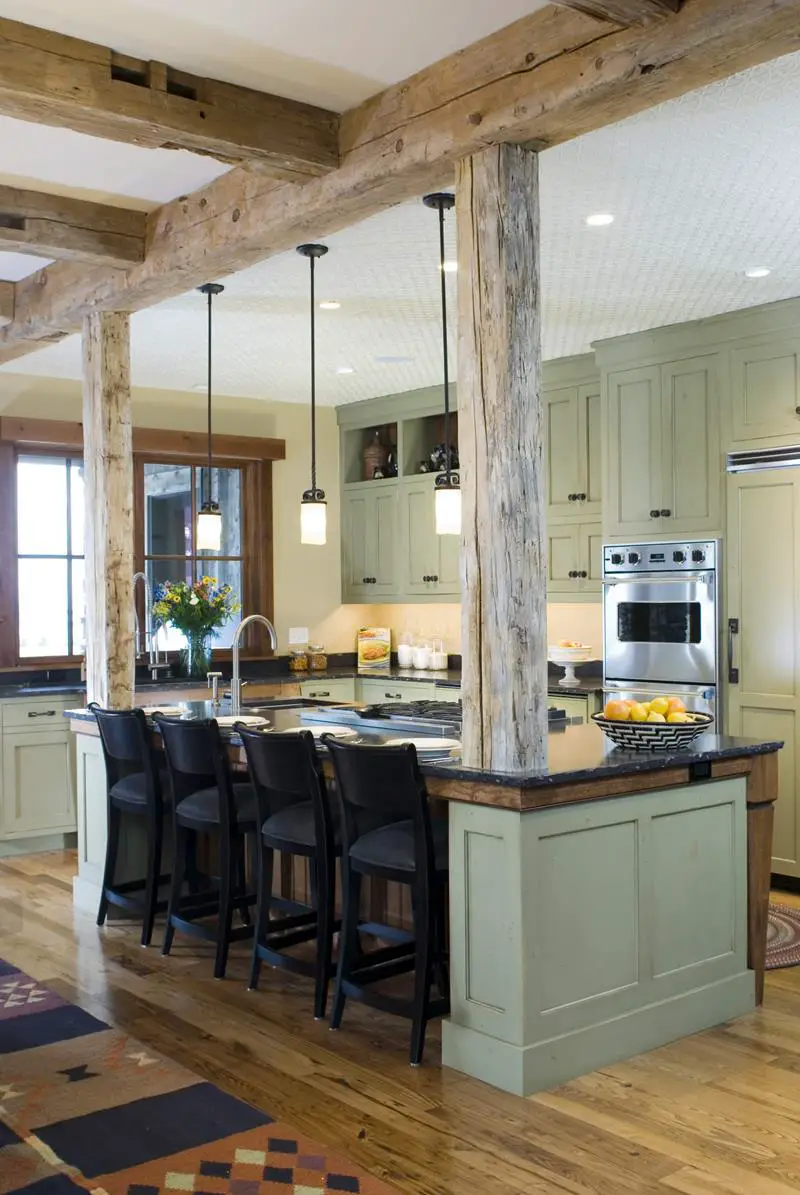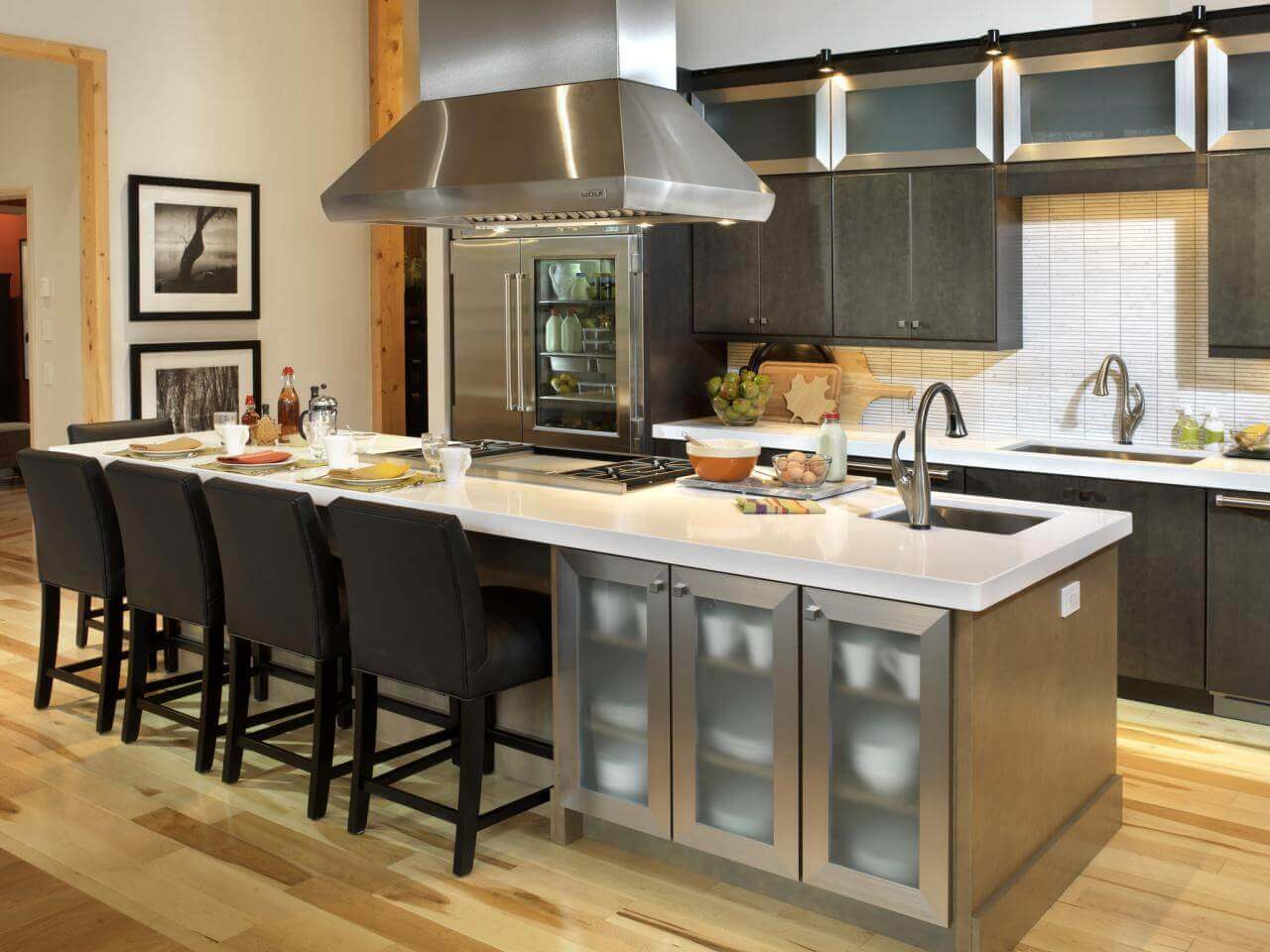Kitchen Island with Stove Top: Design and Considerations
I. Introduction to Kitchen Islands with Stove Tops

A. Maximizing Space and Efficiency in the Kitchen Kitchen islands with stove tops are a popular choice for homeowners looking to optimize space and create a functional and efficient cooking area. These islands provide additional countertop space and offer the convenience of having the stove top centralized in the kitchen layout.
B. Benefits of Incorporating a Stove Top into a Kitchen Island Having a stove top on the kitchen island offers several advantages. It allows for better interaction with guests or family members while cooking, provides a separate cooking zone away from other work areas, and can enhance the overall aesthetics of the kitchen.
II. Design Options and Styles
A. Freestanding Stove Top on the Island
- Traditional and Versatile Design A freestanding stove top on the kitchen island offers a classic and versatile design. It can be incorporated into various kitchen styles, from traditional to contemporary, and allows for easy installation and flexibility in terms of placement.
- Integration with Existing Kitchen Aesthetics When selecting a freestanding stove top, consider its compatibility with the existing kitchen aesthetics. Choosing a stove top that complements the overall design and finishes of the kitchen creates a cohesive and visually appealing space.
B. Built-in Induction Cooktops
- Sleek and Modern Look Built-in induction cooktops provide a sleek and modern look to the kitchen island. With their smooth glass surfaces and minimalistic design, they add a touch of sophistication and elegance to the overall kitchen decor.
- Energy-efficient and Easy to Clean Induction cooktops are known for their energy efficiency and ease of cleaning. They use electromagnetic energy to heat the cookware directly, resulting in faster and more efficient cooking. The smooth surface is easy to wipe clean and maintain.
III. Placement and Layout Considerations
A. Ergonomics and Workflow Efficiency
- Ideal Distance between Island and Other Work Surfaces When planning the placement of a stove top on the kitchen island, consider the ergonomics and workflow efficiency. The ideal distance between the island and other work surfaces, such as the sink or refrigerator, should allow for easy movement and a seamless cooking experience.
- Suitable Clearance for Safe and Comfortable Cooking Ensure there is suitable clearance around the stove top for safe and comfortable cooking. Leave enough space for ventilation, maneuvering pots and pans, and avoiding any potential hazards.
B. Ventilation and Hood Options
- Choosing the Right Type of Ventilation System Proper ventilation is essential when incorporating a stove top into the kitchen island. Choose the right type of ventilation system, such as a downdraft vent or a ceiling-mounted hood, to effectively remove cooking odors, smoke, and grease from the kitchen.
- Proper Hood Installation for Effective Venting Ensure that the hood is installed correctly above the stove top to maximize its venting capabilities. Proper installation and regular maintenance of the hood, including cleaning filters and checking for proper ductwork, contribute to its effectiveness.
IV. Electrical and Gas Requirements
A. Electrical Supply and Wiring
- Adequate Power for the Stove Top Ensure that the electrical supply and wiring can accommodate the power requirements of the stove top. Consult with an electrician to determine the necessary electrical upgrades, if any, to safely power the stove top.
- Consulting with an Electrician for Installation To ensure a safe and proper installation, it is highly recommended to consult with a licensed electrician.
B. Gas Supply and Safety Measures
- Ensuring Proper Gas Line Connection If using a gas stove top, ensure that the gas line connection is properly installed and meets safety standards. A licensed gas professional should inspect and connect the gas line to the stove top to ensure optimal performance and safety.
- Following Local Codes and Safety Guidelines It is crucial to follow local codes and safety guidelines related to gas installation. This includes proper ventilation, gas shut-off valves, and compliance with local regulations for safe gas usage in the kitchen.
V. Functional Considerations
A. Size and Cooking Surface Options
- Determining the Number of Burners Needed Consider the number of burners needed for your cooking requirements. Determine if a four-burner stove top is sufficient or if additional burners are necessary for more elaborate cooking preparations.
- Considerations for Specialized Cooking Surfaces Specialized cooking surfaces, such as griddles, grills, or wok burners, can be incorporated into the stove top. Assess your cooking preferences and explore options that align with your culinary needs.
B. Storage and Organizational Features
- Incorporating Cabinets and Drawers for Utensils and Cookware Utilize the space around the stove top on the kitchen island for storage. Incorporate cabinets or drawers to store utensils, cookware, and other kitchen essentials conveniently.
- Customizing Storage Solutions for Convenience Customize storage solutions to maximize convenience.
VI. Maintenance and Cleaning
A. Regular Cleaning and Maintenance Routine
- Proper Care for Stove Top Surface Follow the manufacturer’s guidelines for cleaning and maintaining the stove top surface. Regularly wipe down the surface after each use to remove spills or debris and prevent buildup.
- Cleaning Grease Traps and Filters If using a hood or ventilation system, regularly clean the grease traps and filters. This ensures proper functioning and prevents the accumulation of grease that can pose a fire hazard.
B. Routine Inspection and Repair
- Checking for Gas Leaks and Electrical Issues Regularly inspect the gas connections, valves, and electrical components for any signs of leaks or issues. Promptly address any concerns and seek professional assistance for repair or maintenance.
-
Addressing Malfunctioning Parts or Components If any parts or components of the stove top are malfunctioning, contact the manufacturer or a professional technician for repair or replacement. Do not attempt to fix or replace parts without proper knowledge and expertise.
